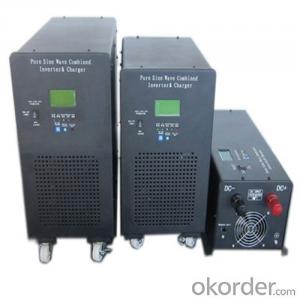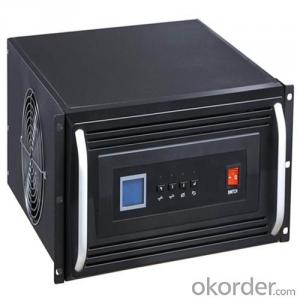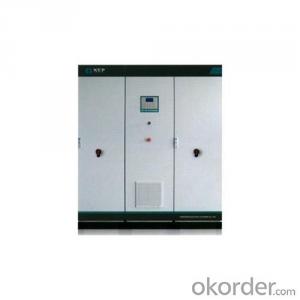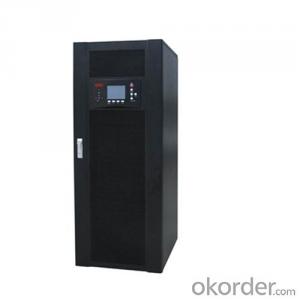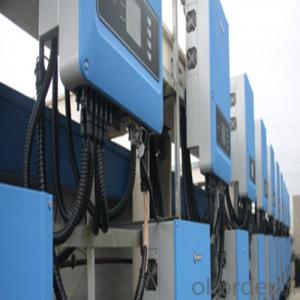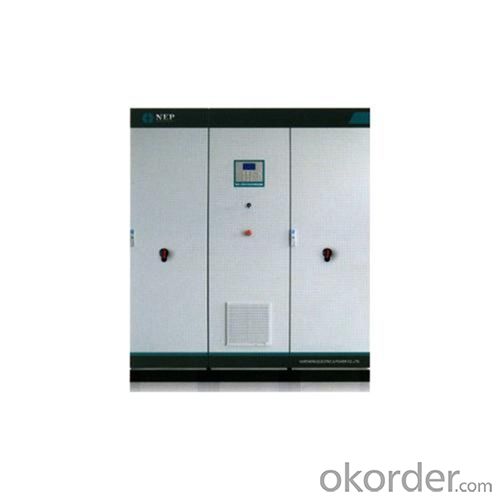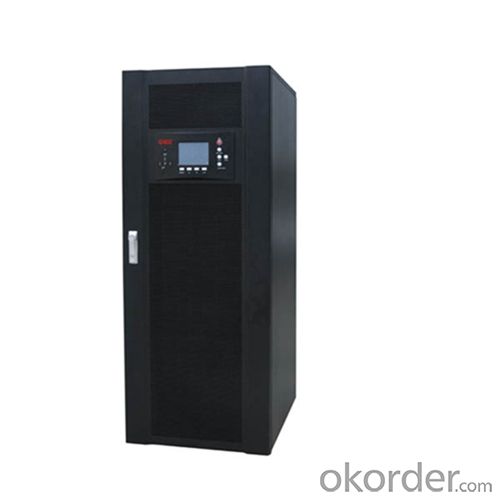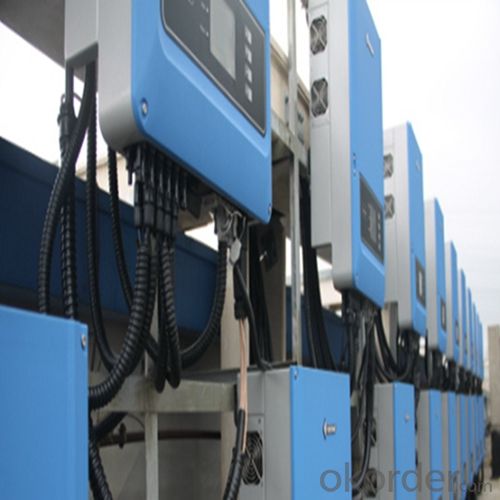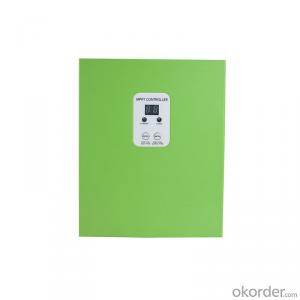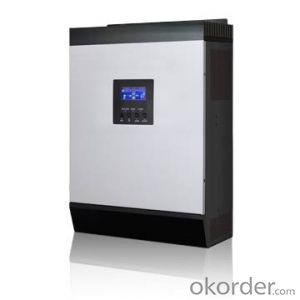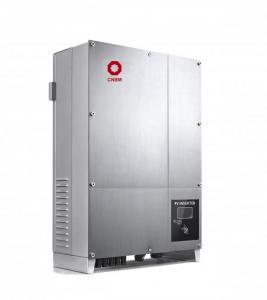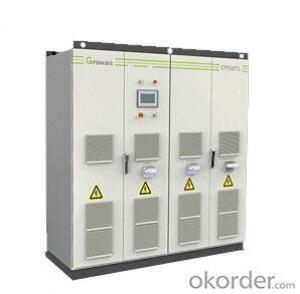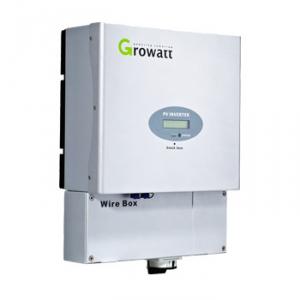Solar Inverter Brisbane - Approved MPPT Solar Charger 3000W 24V
- Loading Port:
- Shanghai
- Payment Terms:
- TT OR LC
- Min Order Qty:
- 5 pc
- Supply Capability:
- 3000 pc/month
OKorder Service Pledge
OKorder Financial Service
You Might Also Like
Performance Characteristics
· 1. Suitable for all electrical equipments
· 2. Large LCD display for more detailed content
· 3. CPU controlled; fast transfer time
· 4. Intelligent battery management, prolonging the service life of the battery
· 5. Complete protection function, high reliability
· 6. Can provide high current charge
· 7. Can match different types of batteries
· 8. Disassembled LCD box which can make the operation in a distance of 15 meters
Product introduction
EP series is sine wave low frequency inverter, which is specifically designed for home appliances. It is equipped with a big LCD screen so all information is displayed in detail, which makes it more convenient to use. Charging current of the inverter is adjustable from 5A to 45A and you can also select different charging voltage to charge different types of batteries so batteries are under great protection.
Our Service
Samples
Samples are Available for Testing and Market Test.
Warranty
We provides warranty against defects in materials and workmanship for its Uninterruptible power supply, Power inverter/chargers including inverter12v 24v 48V, Solar charge controllers (“Product”).
OEM Service
OEM service is strictly based on the ISO9001 ISO14001 quality assurance system. The TOP involves the effective teamwork of departments from Sales, R&D, and Engineering, purchasing, production & QA, assuring a high quality product and prompt delivery for customers. The standardization of our quality system and the quality stability has earned us the trust of our customers for 12 years.
We have 10 sets of automatic insertion equipments, ICT PCB testing equipments, ATE automatic testing center and aging workshop for all products. Monthly output of UPS series exceeds 200,000. We have been offering OEM service for over 12 years.
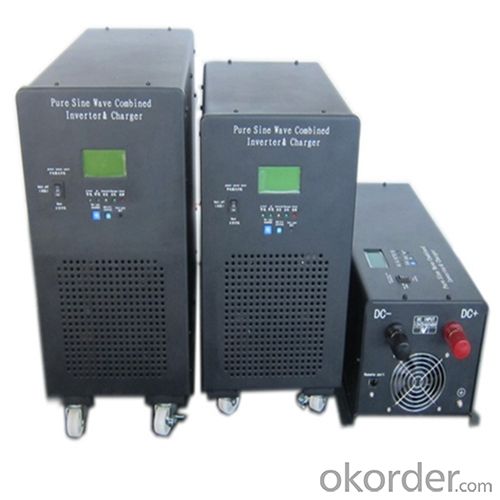
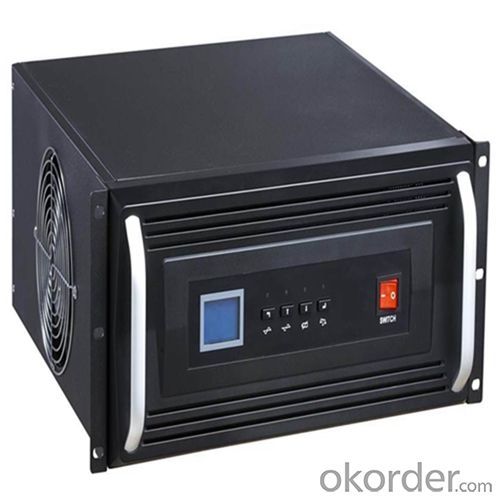
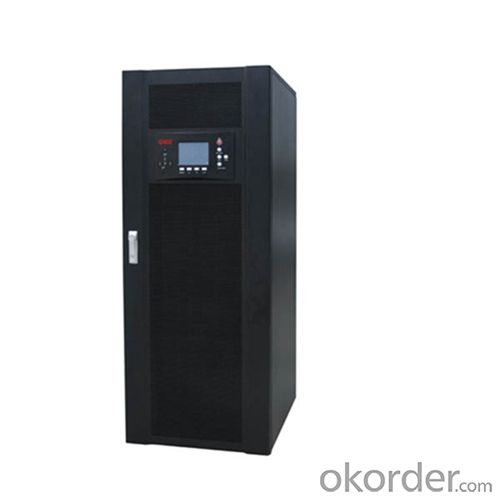

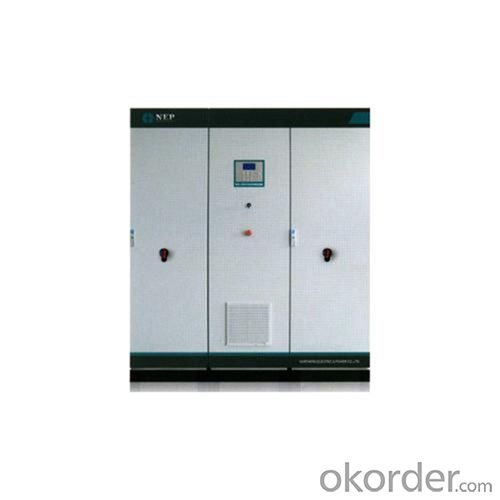
Specifications
Input | |
Input Voltage Range | 182-265VAC |
Output | |
Input Voltage Range | Batt.Mode:50±0.3Hz Mode:48-54Hz(50Hz) or 58-64Hz,Same as AC |
Output Wave Form | Sine Wave (Batt,mode) |
Transfer Time | 10ms(Typical) |
FAQ:
Q: Do you have the CE, TUV, UL Certification?
A: We’ve already passed all the tests, and any certificate is available.
Q: Have you ever sold your products to companies in my country?
A: Of course, we have customers in all general PV markets, but I think we should expand our market share along with the market growth.
Q: When did your company set up? You are a new company, how can I believe your quality?
A: We entered into Solar PV industry in 2005, now we have several plants in manufacturing of a-Si and c-Si panels, and our capacity is 220MW per year. Till now we have already passed all the tests by authorized laboratories, e.g. TUV, CE, UL.
Q: Can you help us install the module if we cooperate with you?
A: We haven’t entered into installation sector, but we have the plan in near future.
Q: How do you pack your products?
A: We have rich experience on how to pack the panels to make sure the safety on shipment when it arrives at the destination.
Q: Can you do OEM for us?
A: Yes, we can.
Q: Can we visit your factory?
A: Surely, I will arrange the trip basing on your business schedule.
- Q: How does the harmonic distortion affect the performance of a solar inverter?
- Harmonic distortion can negatively impact the performance of a solar inverter. It can cause increased heat generation, reduced power quality, and can lead to premature failure of components. Additionally, harmonic distortion can interfere with other electrical devices connected to the inverter, causing disruptions and potential damage. Therefore, minimizing harmonic distortion is essential for maintaining optimal performance and efficiency of a solar inverter.
- Q: How does a solar inverter handle grid frequency deviations?
- A solar inverter handles grid frequency deviations by continuously monitoring the frequency of the electrical grid. If the grid frequency deviates from the standard frequency, the inverter adjusts its output frequency accordingly to maintain synchronization with the grid. This ensures that the solar power generated by the inverter is in phase with the grid frequency, allowing seamless integration of the solar power into the grid system.
- Q: How does a solar inverter convert DC to AC?
- A solar inverter converts direct current (DC) electricity generated by solar panels into alternating current (AC) electricity that can be used to power appliances and feed into the electrical grid. It does this by using a complex electronic circuit that first converts the DC power into high-frequency AC power. This high-frequency AC power is then transformed into the desired voltage and frequency of standard AC power using pulse-width modulation techniques. The converted AC power can then be utilized for various household or commercial electrical needs.
- Q: What is the maximum power rating of a solar inverter?
- The maximum power rating of a solar inverter typically depends on its size and capacity, but it can range from a few hundred watts to several megawatts.
- Q: What is the maximum DC voltage that a solar inverter can handle?
- The maximum DC voltage that a solar inverter can handle varies depending on the specific model and design. However, in general, most solar inverters can handle DC voltages up to 1000V or higher. It is important to consult the manufacturer's specifications to determine the maximum DC voltage capacity of a particular solar inverter.
- Q: Can a solar inverter be used with a battery backup system?
- Yes, a solar inverter can be used with a battery backup system. A solar inverter is responsible for converting the DC power generated by solar panels into AC power used in our homes. By connecting a battery backup system to the solar inverter, excess solar energy can be stored in batteries for later use, providing power during periods of low or no sunlight, such as at night or during power outages.
- Q: Can a solar inverter be used in systems with different module orientations?
- Yes, a solar inverter can be used in systems with different module orientations. Solar inverters are designed to convert the direct current (DC) generated by the solar panels into alternating current (AC) that can be used to power electrical devices. They are compatible with various module orientations, including both portrait and landscape orientations. However, it is important to consider the efficiency and performance of the solar system when installing modules with different orientations, as it may affect the overall energy production.
- Q: Can a solar inverter be used in commercial applications?
- Yes, a solar inverter can be used in commercial applications. In fact, solar inverters are commonly used in commercial settings to convert the direct current (DC) produced by solar panels into alternating current (AC) that can be used to power various electrical devices and appliances. Commercial buildings often have larger solar systems installed, requiring more powerful inverters to efficiently convert the solar energy into usable electricity for the facility's commercial operations.
- Q: How does the total harmonic distortion affect the performance of a solar inverter?
- The total harmonic distortion (THD) can significantly impact the performance of a solar inverter. Higher levels of THD can cause electrical noise, which can interfere with the operation of sensitive equipment connected to the inverter. This can result in reduced efficiency, increased heat generation, and potential damage to the connected devices. Additionally, high THD can also lead to power quality issues, such as voltage and current distortions, which can further degrade the performance of the solar inverter and its associated components. Therefore, it is crucial to minimize THD to ensure optimal performance and reliability of the solar inverter system.
- Q: How does a solar inverter handle shading or partial obstruction of solar panels?
- A solar inverter typically addresses shading or partial obstruction of solar panels by employing a technology called maximum power point tracking (MPPT). This technology allows the solar inverter to constantly monitor the output of each individual solar panel and optimize the power generation by adjusting the voltage and current levels. By doing so, it minimizes the impact of shading or obstruction on the overall system performance, ensuring maximum energy production even in less than ideal conditions.
Send your message to us
Solar Inverter Brisbane - Approved MPPT Solar Charger 3000W 24V
- Loading Port:
- Shanghai
- Payment Terms:
- TT OR LC
- Min Order Qty:
- 5 pc
- Supply Capability:
- 3000 pc/month
OKorder Service Pledge
OKorder Financial Service
Similar products
Hot products
Hot Searches
Related keywords
